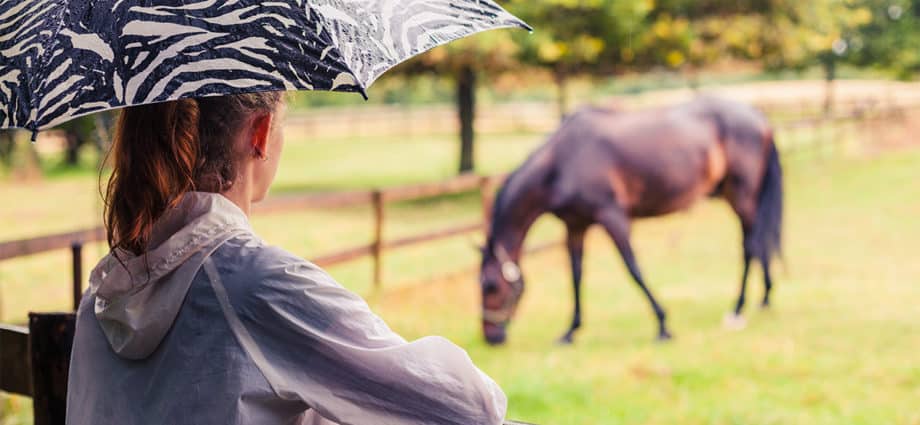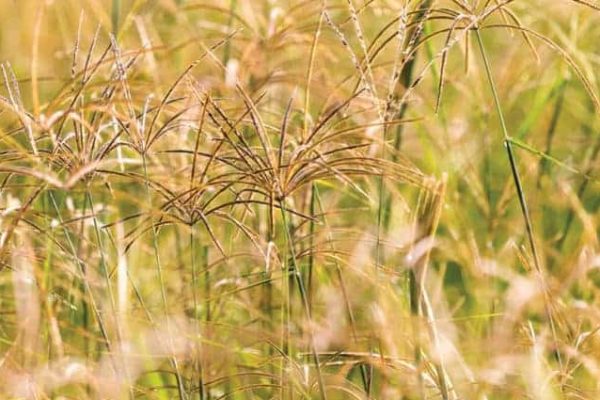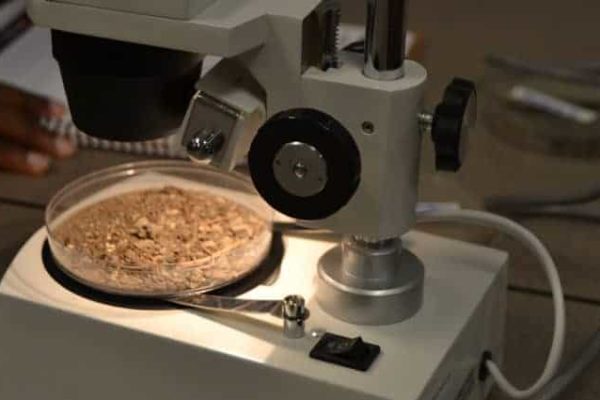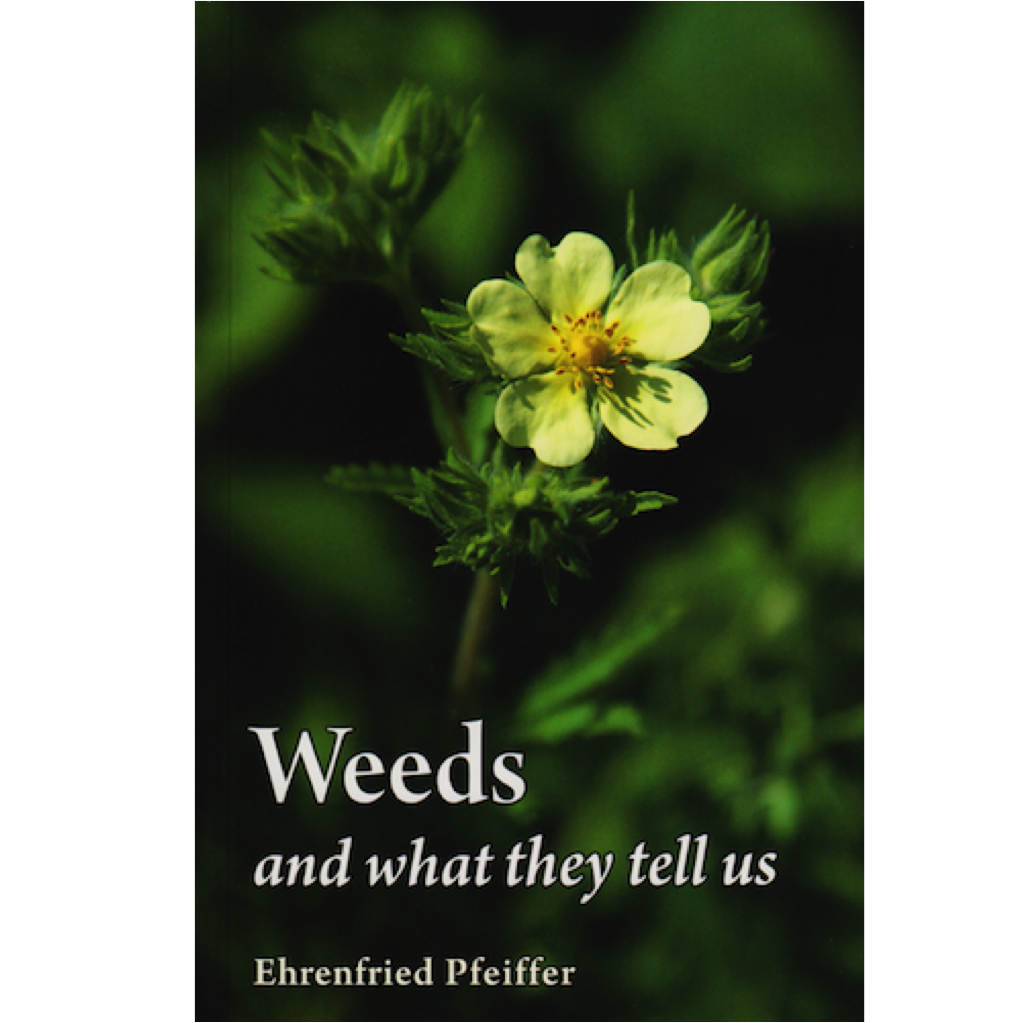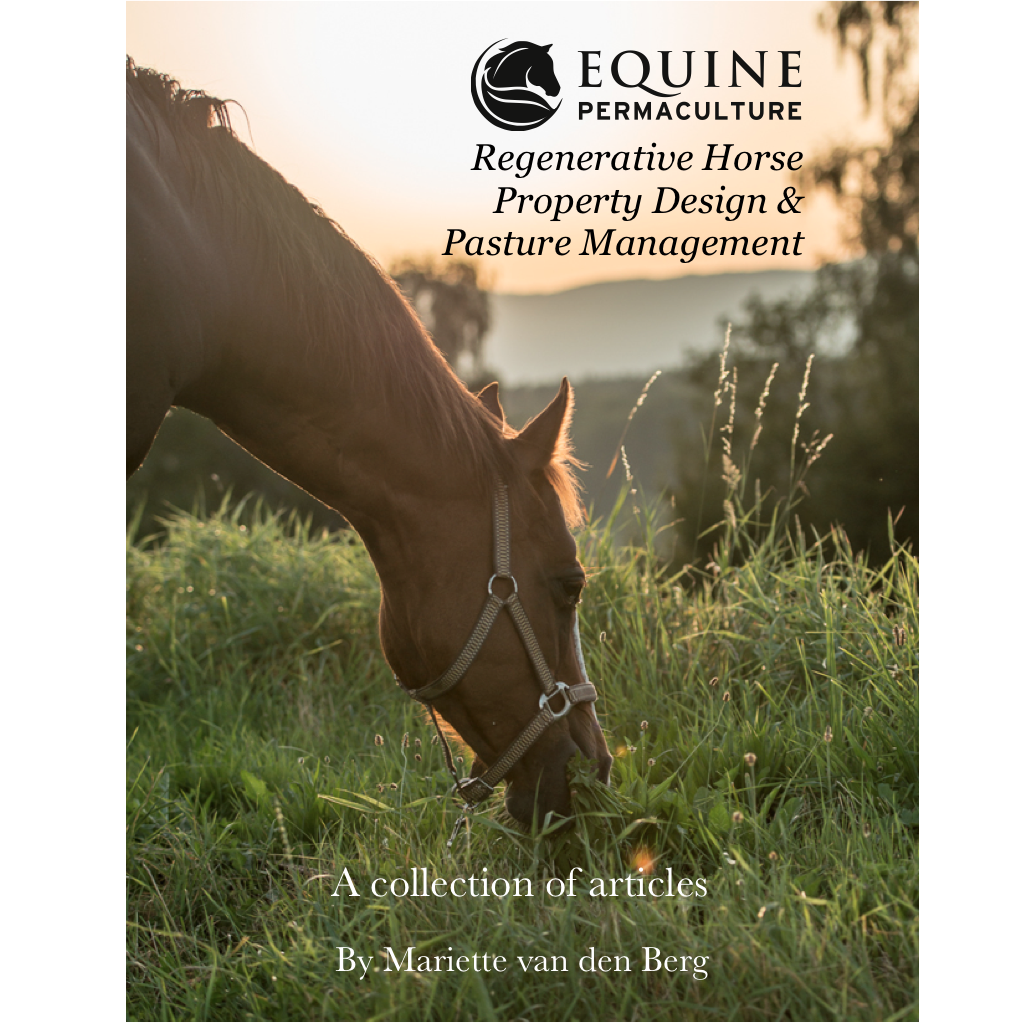After yet another dry and hot year in Australia, most horse owners and farmers are longing for some steady rain to kick-start the growing season and seeing some green and standing grass. And, while nature does seem to restore things in a short time when temperature rises and water becomes more abundant, there are some aspects that you should be aware of before letting your horses out on these green emerging pastures.
Article highlights:
- When the rain comes it’s a relief, but the problems don’t end there.
- Pastures that have undergone drought stress need enough time to fully recover.
- After the drought breaks, make sure you observe the new growth and manage your horses’ grazing time accordingly as it may put both plants and horses at risk!
- While it’s tempting to keep horses longer in paddocks or turn them on to green emerging pastures, you have to delay and utilise where possible designated sacrifice areas or dry lots.
- You may even have to stable or contain your horses in yards to reduce pressure during the first stages of pasture recovery and growth.
- Make sure you have a post-drought plan in place for you pastures and horse management.
- Identify paddocks that most likely need to be restored and graze only those paddocks that have sufficient density and leaf area.
- When pastures are back in full production, make sure you rotate your paddock to allow for recovery and avoid overgrazing new growth.
- If you have the possibility to harvest fodder, make sure you start planning your haymaking or alternatively build into your long-range ‘fodder conservation’ strategy to reduce the effects of the next drought.
Hold your horses!
Pastures are under a great deal of pressure when the drought breaks. Roughage and supplementary feeding is less available and more expensive during droughts, so it’s tempting to let horses continue grazing paddocks in the hope that the growth will improve dramatically and gradually meet animal needs. However, it pays not to, as this is very damaging to your pasture.
The effects of drought on pastures are extremely variable and subject to a large number of factors. Often, pastures that have experienced drought have limited ground cover and can even be bare. This affects the soils’ fertility. Compaction due to set stock grazing often contributes to other pasture/soil problems such as erosion, water logging and weeds!
After the drought breaks, weeds commonly accumulate in large quantities, as pastures are weakened and less able to compete with vigorous weeds, especially annual species. If these weeds accumulate secondary compounds that can cause toxic effects, horses and livestock are at risk of getting sick.
Therefore, it’s important as a horse owner to be aware of these challenges after the drought breaks, and develop appropriate management strategies that will allow you to establish sufficient and healthier pasture to safeguard your horses.
Drought is tough for pasture plants
It is not a surprise that drought is tough for pasture plants. Without water they cannot survive or grow. One of the most obvious effects of drought is thinning out of large areas of perennial pastures. The level of thinning out largely depends on:Advertisement
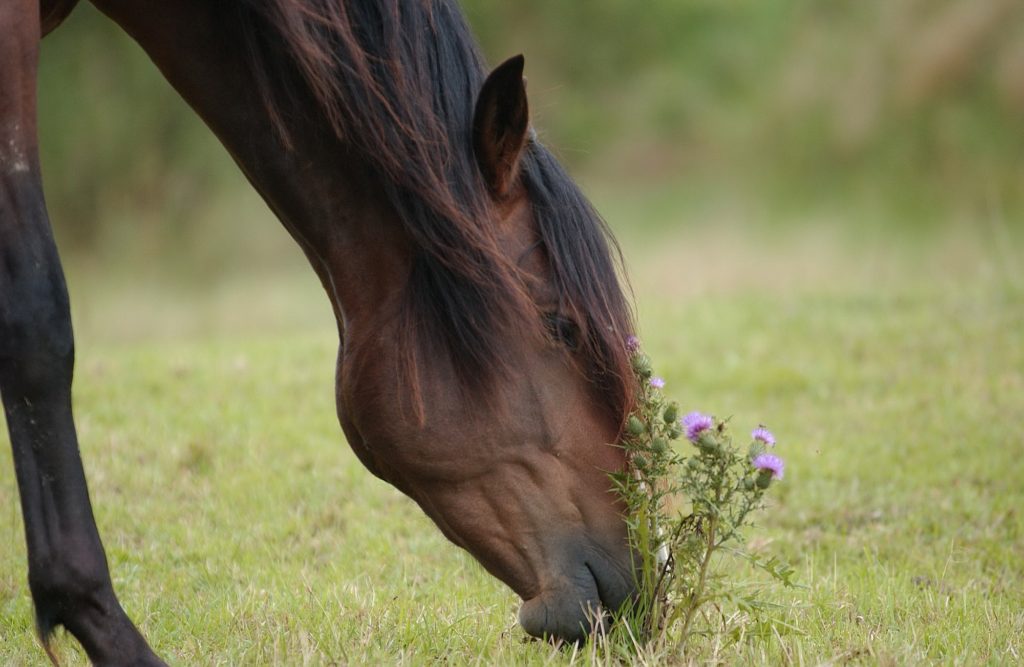
Grazing pressure by animals: Research has shown that where grass stubble has been retained, the survival of perennial grasses was significantly greater than where feed was grazed out completely.
The species involved and soil fertility: It has also been shown that on good-fertility soils shallow-rooted pasture species such as ryegrass and cocksfoot were lost in significant numbers, whereas phalaris, fescue and native grasses such as wallaby grass and weeping rice grass survived.
The severity of the drought: Studies have demonstrated that losses of pasture were greater following prolonged dry conditions (where some green feed may still be available) than losses from severe drought. This is because in long-term drought plants stop growing, whereas in dry spells plants continue to grow and are grazed off, which depletes their energy reserves, resulting in death of the plants or very weakened plants that don’t recover well.
Management matters
Our management significantly affects pastures in drought. During drought times and because grass is not growing, horse owners usually keep their horses longer in paddocks. This, however, results in continued grazing and compaction of your soils.
Following the break, this will often create further problems, such as erosion, waterlogging and/or weeds.
As highlighted above, keeping some stubble is the key to the future survival of grasses after drought. It is therefore important that you still rotate your pastures during winter and drought.
However, if rotation is not an option, then it’s important that you lock up some paddocks and designate only certain areas as a sacrifice area or a dry lot. Alternatively, you may have to consider keeping your horses for parts of the day in stables or yards to reduce grazing/trampling of drought-affected pastures.
Each drought is different, with the current drought being exceptionally severe in many areas. Understanding the effects of drought on plants is important, because it guides the management of both, your pasture and horses.
Assess your pastures: What has survived?
When the drought breaks, it is essential that you monitor your pastures and assess what plants have survived and what may be growing that is less favourable – such as specific weeds.
There will be many factors that influence the survival of your grasses and legumes such as, total and frequency of rainfall, pasture composition, soil condition, type, slope and aspect, grazing pressure, management strategy and the pasture’s health before the drought.
Check your horse paddocks after growth has recommenced, determine what is left, but also establish what the potential of the remaining pasture is, given a reasonable chance of recovery and reasonable seasonal conditions.
For some grass types such as annuals and tropical grasses, you may have to wait till later in spring/summer (warm-season grasses) or autumn (for cool season grasses). If you need some help with identifying plant species seek advice from your local landcare or catchment organisations or ask a pasture consultant.
There are also many free online grass species guides and database programs that you could access on the Internet.
After checking the potential for survival and for future regeneration of your pastures, rank them according to their potential value after the drought.
You can rank your pastures as follows:
- The paddocks that have moderate to good density of desirable species but have been under severe stress from drought and grazing pressure will be Group 1.
- The paddocks that have moderate to good density of desirable species but have not been under severe stress from drought and/or heavy grazing will make up Group 2. These paddocks offer the possibility of some grazing as conditions improve but will need management to allow full recovery in the short term. Consider only short term grazing or alternate with locking up horses in stables or yards for parts of the day.
- The paddocks where the pasture density is too thin in order for it to become worthwhile pasture after a return to more normal conditions are Group 3. This last group can be considered for immediate grazing (sacrifice paddocks), cropping, re-sowing or pasture renovation treatment.
Once you have identified the pasture species that have returned and you have ranked your pastures as per the above, you will have to develop strategies where:
- Paddocks and pastures identified as ‘1’ (high-potential) are given priority for rest and recovery.
- Pastures and paddocks that are classed as ‘2’, should be scheduled for rest as soon as practicable.
- Paddocks and pastures in the last group ‘3’ can be used as sacrifice paddocks where drought feeding can continue until growth on better paddocks improves. These paddocks are suitable for re-sowing, renovation or being sown down to grow forage/fodder crops.
Managing what is left
Horse owners rarely consider post-drought management and often, pasture management is compromised by resting pastures less (if at all) or grazing pastures harder and for longer periods, and grazing to a height that is shorter than recommended. This causes energy reserves to depleted and the plant is weakened, often to the point of death.
Where pastures are compromised in this way, they need to be compensated.
A good fall of rain in itself does not overcome drought stress. The plant has to be allowed a period of recovery to build up the energy reserves that will allow it to reach its full potential.
You often need to help your pastures with additional input such as mulching, composting and/or spreading (bio) fertilisers to optimise the environment for soil organisms and nutrient exchanges with the plants.
Check our previous series on ‘All About Soil’
Rest is recovery
Rest is the key to preventing overgrazing. The length of time that a plant needs to recover following grazing depends on several factors including the type of forage species, plant vigour, and the level of utilisation.
Recovery time also depends on the season or time of year, which determines conditions such as day length and temperature. Soil condition, fertility and moisture also impact plant growth rates.
If we want to rest paddocks and allow recovery, we must manage the grazing time of our horses.
So, when can we graze pastures again?
To answer this question we need to look at the pasture growth stages.
The efficiency with which plants convert the sun’s energy into green leaves and the ability of animals to harvest and use energy from those leaves depends on the phase of growth of the plants.
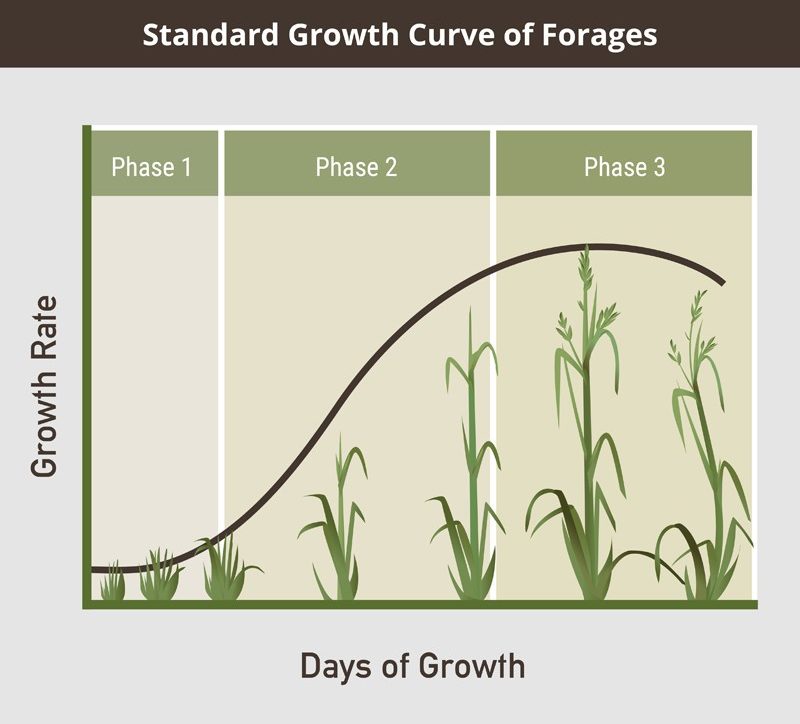
Plants go through three phases of growth that form an “S” shaped curve. The timing of the growth curve for each forage species is unique and these growth characteristics are an important factor when determining proper season of use for grazing.
For example, cool-season grasses start growing in spring and again in autumn, whereas warm-season grasses peak later, when it’s closer to summer.
The growth stage will dictate when plants are most vulnerable or when the plants have created enough biomass to survive grazing attacks! Therefore, avoid grazing pastures when plants are in phase 1.
In this first growth stage, the plants are weak and have insufficient leaf area to produce biomass quickly. After such a long, severe stress period of drought, pastures should be allowed to reach phase 3 and reach flowering.
At this stage, the plant’s energy reserves have been replenished, assuming flowering has not been premature (i.e. forced by dry conditions). If this is difficult to manage for all paddocks, at the very least, after drought, delay grazing some paddocks until pastures are into phase 2, at which stage they are growing actively and have sufficient leaf area to produce feed efficiently.
Where you are forced to graze paddocks early, plan to rest them (and preferably allow perennial grasses to seed down) as soon as conditions permit.
During the growing season, rotate your horses more frequently. The golden rule is fast growth = fast moves (shorter recovery) whereas slow growth = slow moves (longer resting). The height of pasture at these growth stages will vary considerably, depending on species, density, growing conditions etc., but as a guide, a typical healthy dense perennial grass/legume pasture would be in phase 2 between 5 cm and 15 cm high. It may take a few weeks to reach this stage depending on the vigour.
Weeds
It is also important that you keep track of the type of weeds that may be growing after the drought breaks. You might find that you get weeds you have never seen before or the quantities are much higher than usual.
The weeds that you can find after the drought breaks will vary depending on seed bank, location and soil condition. Often, weeds grow first as they have deep-tap roots and establish more vigorously when water becomes available, outcompeting shallow-rooted grasses.
Weeds can accumulate sugar, starch, or fructan under drought stress. This makes weeds a lot more appealing to your horse, especially when pasture is not abundant.
Dandelion, thistle and chicory are common weeds that often are relished by horses even under normal conditions.
However, there are some weeds that are more of a concern such as capeweed, flat weed, marshmallow weed, Paterson’s curse, St John’s wort, common heliotrope, mintweed, pigweed, fireweed, wireweed, and caltrops.
Many plant toxins concentrate under drought conditions. Weeds can accumulate nitrates, oxalates, alkaloids, prussic acid, and cyanogenic glycosides, which can cause a wide variety of equine health problems including staggers, digestive upset, laminitis, mineral imbalances, photosensitivity, and liver, kidney, and neurological damage.
For more information see the guide on toxic plants for horses published by RIRDC.
It is important that you remove horses from pastures where you have identified weeds that may put your horses at risk, especially if they are in large quantities.
These paddocks will need to be restored and managed to ensure that weeds are removed and no new weeds emerge. Don’t forget your sacrifice or dry lot areas as well!
Your horse’s health
The most common fear horse owners have in spring or when drought breaks is the quick growth of lush, green pasture and accumulation of non-structural carbohydrates. This can put horses at risk of developing digestive problems and/or trigging metabolic conditions, such as laminitis and EMS.
As we explained above, when conditions are favourable – a rise in temperature, sunlight hours and water availability – plants will start using their energy reserves (fructan or starch) to create more leaves, to increase their surface area, and accumulate more simple carbohydrates for new growth and seed production. Re-watering stimulates production of enzymes that break storage carbohydrates into shorter chains, and ultimately to the sugar components.
Those first new green shoots can therefore, be very high in sugar. The type of sugar produced after the drought breaks can vary depending on the species of grass.
Typically, improved pastures are more adapted to grow rapidly and allocate sugars for more growth, whereas native pasture species can survive well during drought conditions, but typically accumulate biomass slower (hence why native pastures are more susceptible to overgrazing pressure).
Grazing pastures that are in phase 1 should be avoided where possible, not only to protect the plant, but also to protect your horses, especially those with weight or metabolic problems.
Aim for the mid to end stage 2 or the beginning of stage 3 (before flowering). This is when production of sugars slows down and when the sugars are fully utilised by the plant.
As mentioned earlier, allowing pasture to set seed is important to add to your seed bank and diversity.
Nevertheless, research has shown that, if you slash pastures just before seeding, you can increase leaf production whilst avoiding the sugar increase from the seed heads. It is therefore advised that you check the ranking of you pasture and decide which pastures you allow to set seed and which ones you prep for grazing.
During the times when grazing should be avoided, manage your horses in sacrifice areas/ dry lots and yards or stable them as required. It does mean, however, that you have to continue feeding conserved forages and alternative fibre sources!
Regeneration of pastures
Where you have the ability to rest your paddocks (group 1 or 2), it’s important that you check your soil’s condition and organisms. Soil analysis is recommended to provide you with a point of reference as to what you may have to do to improve your soil and pasture condition to reach its full potential.
Often, topsoil is lost during drought periods due to thinning out of plants which creates bare patches that turn to dust and are exposed to wind erosion.
Increasing your organic matter (mulching), adding compost and fertiliser should be considered to increase fertility and support soil organisms. But make sure that you plan this when water is available.
If you are dealing with moderate to very degraded pastures (group 3) or experience problems such as erosion, water logging or weeds, you often will need to tackle the underlying problem – compaction.
See our previous articles on how to de-compact your soils and manage weeds.
If the pasture has significantly deteriorated, re-sowing may be necessary. Your options include a full seed-bed preparation for a forage crop, or direct drilling to re-establish a permanent pasture. Some annuals can be surface-applied in higher-rainfall areas.
Fast-growing forage crops fit in well to a pasture regeneration program after drought. Once established, they can take the pressure off the high-potential pastures, allowing them to recover.
Fast-growing forage crops are also useful for cleaning paddocks of weeds prior to re-sowing pasture and for replenishing hay and fodder reserves quickly.
Pasture re-sowing is expensive, however, and should be used only when the pasture is unlikely to improve through other techniques.
The bare ground situation, reduced sward density and lowered stock numbers (in some grazing areas) can provide an ideal opportunity for you to sow improved and/or native pasture species or to thicken up a sward where plant numbers have been reduced by drought.
Please note that after drought, the availability of locally produced pasture seed may be limited but there should be adequate seed available from other states. Of course, the price of seed is likely to rise and supply/demand generally will keep prices higher for some time after the drought.
The takeaway…
- When the rain comes it’s a relief, but as this article has highlighted, the problems don’t end there.
- Pastures that have undergone drought stress need enough time to fully recover.
- After the drought breaks, make sure you observe the new growth and manage your horses’ grazing time accordingly as it may put both plants and horses at risk!
- While it’s tempting to keep horses longer in paddocks or turn them on to green emerging pastures, you have to delay and utilise where possible designated sacrifice areas or dry lots.
- You may even have to stable or contain your horses in yards to reduce pressure during the first stages of pasture recovery and growth.
- Make sure you have a post-drought plan in place for you pastures and horse management.
- Identify paddocks that most likely need to be restored and graze only those paddocks that have sufficient density and leaf area.
- When pastures are back in full production, make sure you rotate your paddock to allow for recovery and avoid overgrazing new growth.
- If you have the possibility to harvest fodder, make sure you start planning your haymaking or alternatively build into your long-range ‘fodder conservation’ strategy to reduce the effects of the next drought.
This article was published in Horses and People September-October 2019 magazine.

